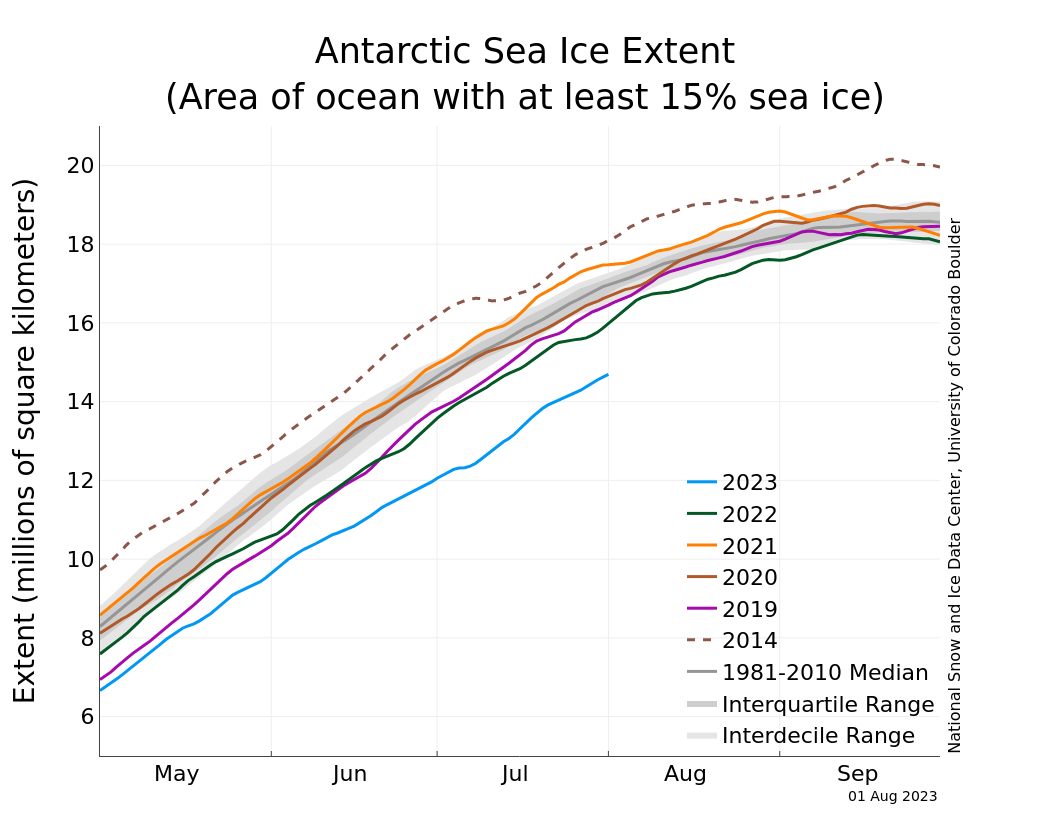Researchers are concerned about a huge chunk of ice larger than Mexico failing to refreeze as temperatures drop in Antarctica.
Researchers are concerned about a huge chunk of ice larger than Mexico failing to refreeze as temperatures drop in Antarctica.
“Chunk of ice”, “failing to refreeze”
Wut?
Yeah, that wording is clunky. I guess, according to the article, the ice is known to melt and return in a cyclical pattern every year. This year almost a million square miles of ice did not form as expected.
Take a look at this chart to see how much less ice there is than usual
to see how much less ice there is than usual
Wow that’s crazy
Cropped Y axis exaggerates it a bit, but it’s still a fair deficit.
The whole article is a bit clunky to read.
“The word ‘unprecedented’ gets thrown around a lot…” Are you trying to reach a minimum word count?
Ha, I definitely recall writing sentences like that in school.
Right now, it’s winter in the southern hemisphere. Sea ice should be expanding around Antarctica, but it’s doing so much less than previous years. It’s so bad there’s a chance there won’t be any sea ice by the time it’s mid summer there, in December/January/February. If that happens, there’s nothing to stop the land glaciers from slipping into the sea and significantly raising sea levels worldwide. Could be like 10 feet of sea level rise depending on what happens. (Thwaites Glacier has been named in many articles as especially precarious and able to contribute 10 feet on its own.)
I share your concern over the risks posed by the loss of sea ice. However, per the Thwaites Glacier Collaboration, even if the entire glacier were to collapse it would amount to around a 65cm rise of sea level, and the majority of that would come in the 22nd and 23rd century.
https://thwaitesglacier.org/about/facts
Ok, cool. idk. I was just referencing stuff like this, from Wired: “If it totally melts, the Thwaites Glacier, aka the Doomsday Glacier, could add 10 feet to sea levels. Sea ice protects Thwaites and other glaciers because it acts like a buffer, absorbing the energy of winds and waves that would otherwise erode them.”
https://archive.is/dyAkw#selection-1423.348-1431.183